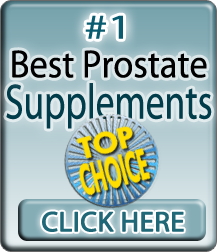BPH Lifestyle Change
Contrary to most first impressions about lifestyle changes with an enlarged prostate, these changes are quite simple, and with practice, can improve your overall health in no time.
 What we’re concerned about as far as lifestyle changes are not anything one could consider drastic. These changes are suggestions that may help you relieve your symptoms with regular practice; and, you may be able to avoid surgery and/or drug therapy. This article focused on lifestyle changes with an enlarged prostate where symptoms do not require medication or surgery to relieve symptoms and related problems.
What we’re concerned about as far as lifestyle changes are not anything one could consider drastic. These changes are suggestions that may help you relieve your symptoms with regular practice; and, you may be able to avoid surgery and/or drug therapy. This article focused on lifestyle changes with an enlarged prostate where symptoms do not require medication or surgery to relieve symptoms and related problems.
Recommended Lifestyle Changes with an Enlarged Prostate.
- Optimize your fluid intake each day. Set 2 quarts as a minimum and allow for a 16 ounce overage. When you take in water for the day is more important than how much you drink. Give your system time before you sleep to flush itself. Some guidelines suggest no more than 2 quarts. Some guidelines suggest 64 oz. of daily water intake. Be sure to take in enough water, but do this earlier in the daytime hours. Avoid heavy intake after 6 pm. Let the body catch up with the fluids taken during the day before you retire. This is crucial!
- Try to give up alcohol and caffeine. This shouldn’t be done all at once. Try cutting your regular intake levels by half. Every time you serve yourself anything with alcohol or caffeine, make sure it is a half serving. Then drink it slowly. After 30 days, reduce it again by one-half. With coffee drinkers, sudden caffeine cessation can result in terrible headaches. Don’t stress your system. With alcohol, if you feel nervous over not having drinks or wine or beer, you should contact your doctor. This is a serious symptom that you will need support in dealing with out in the open. Many people who do not tell their doctor end up sneaking their alcohol consumption and that can hurt your chances for healing- maybe even push you into a carcinogenic state. Beware.
- Use the bathroom before you “have to go.” Don’t allow difficulties to force you unconsciously to “hold it.” This weakens the bladder and can lead to complications. The bladder is ruled by plumbing and muscles. Both can wear out under excessive pressure from holding urine back. If you are approaching three hours without urination, go to the restroom, sit down, relax, and let go. Yes, that’s right: sit down. Confuse your muscles and they will perform better and even get stronger. Sit down, relax and let go.
- Go. Then, go again. This “double-voiding” technique is good for your bladder. The bladder is supposed to fill and release all of its contents. Sometimes, the size of the prostate can cause a shape that is irregular and the bladder won’t release all of its contents. So give it a chance by going again. Your brain will be conditioned to release that last bit. Allowing urine to build up is not good for your urinary tract. Get it out.
- Exercise every hour for about 3-5 minutes. During an eight hour work day march in place or climb a flight of stairs twice, with vigor. Get your heart pumping and get the organs massaged. Warm up your blood and get oxygen to your prostate. Great impact over the course of a work week: almost 4 hours of exercise (a half of a work day!) Monday through Friday. Then do an hour per day on your weekends. That is some serious work out time for your glandular health: fresh oxygen.
- Improve your diet. More fruits and vegetables can add fiber to your diet that will reduce toxicity of your bowel (colon). The colon can secrete toxic gases into your vital organs through the permeable walls of the digestive tract. Fiber and sufficient fresh water intake reduces colon toxicity AND it these will help you feel more balanced emotionally with a healthier colon (rules the emotional trigger points to the brain!).
